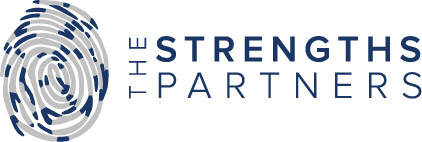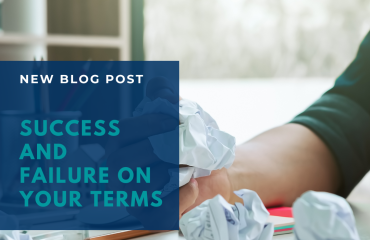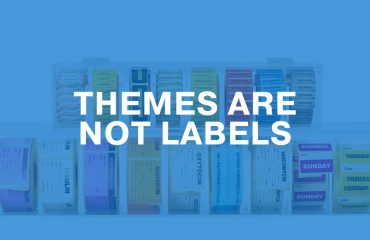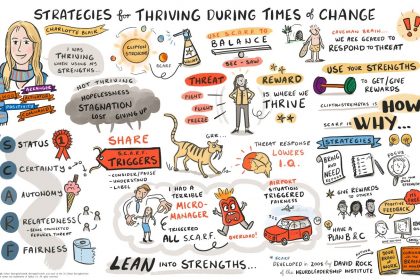
I had the wonderful opportunity to share, as the keynote speaker for the 5th annual CliftonStrengths Philippines conference, some strategies for thriving during times of change.
I am a big fan of models that complement CliftonStrengths. I think of CliftonStrengths like Windex in the movie My Big Fat Greek Wedding. The old Greek father sprays Windex on everything to fix it. You have a sore knee, here spray Windex on it, the door is jammed, here spray Windex on it. However, you might also benefit from a cloth to rub it in, and in comes other tools and frameworks. One of my favourite models to use when thinking about change is the SCARF model. I use this with individuals and, more often than not, teams. I see Strengths as not what we do but how we do it and SCARF as the why we might respond the way we do. It’s also a useful model for self-awareness , teaming and engagement.
The SCARF model was developed and first published in 2008 by David Rock from the Neuroleadership Institute, he is also the author of Your Brain at Work and Coaching with the Brain in mind. This model is backed by science and data from MRI Scans and research from some of the world’s smartest people. He took this research, put it together with leadership and formed a simple and easy to remember acronym.
Our brains are amazing things and are built to clarify things into categories, foremost pleasure and pain. We might also call this threat and reward. When David was talking to these scientists, they shared that they had noticed some interesting patterns in the research. The same parts of the brain were lighting up under MRI when someone was being treated fairly, the same as if we had just given them a gift. By the same token, leaving someone out of a meeting or chastising them in public was lighting up the same part of the brain as physical pain. Neuroscience tells us that social threats can send signals in the brain like physical threat we can end up in a state of fight, flight or freeze. When we are feeling threatened, our prefrontal cortex may struggle to make smart choices, our executive functioning is reduced. Our blood literally drains from our heads to our legs as if we were in caveman days and had to run away from the Saber Tooth Tiger chasing us.
Respecting people’s social needs across five domains: Status, Certainty, Autonomy, Relatedness, and Fairness can have a huge impact on how they navigate and manage their response to change, which frankly is here to stay. The wonderful thing about this easy-to-remember model is that it’s what they call disruptive language, once you know it, it’s hard to forget.
Let’s walk through the 5 elements, and then I will create some linkages to CliftonStrengths.
Status – our relative importance to others.
When we hear the word ‘status’ we often think of status seekers. Status is a universal human drive. From the playground to the workplace, human beings organize themselves into groups. Within those groups, we want to be recognized and feel valued. High status feels good, an increase in status or reputation, studies show, triggers the release of dopamine equivalent to receiving a financial windfall. But when you perceive that your status has been lowered, it triggers a stress response that diminishes cognitive capacity.
An example might be when the soccer coach benched you or you were dropped by a customer. We are continuously monitoring our status, the car we drive the shoes we buy, it’s why we are given things like VIP status and like receiving them.
Certainty – our ability to predict the future.
The brain sees us as safe with familiarity, it’s about predictability. Its why most people can still read this text even though some letters are missing or around the wrong way. Our brain already knows the pattern. We don’t like it so much when we can’t predict what will happen.
On a small level a threat response might look like you asking the other half to take the chicken out the oven at 7pm and they forget and you get annoyed. It might look like when you are on a zoom meeting and the other person doesn’t show up, how does that make you feel? Now think about how you might feel if you were laid off from your job and you don’t know where your next pay check will come from.
Autonomy – our sense of control over events.
Think of the last time you didn’t get to choose maybe your local restaurant was out of the dish you wanted or your manager assigned you a project instead of asking what you’d like to tackle next. Chances are, it probably felt pretty rubbish. A 2020 research study published in the Journal of Applied Psychology found that having the ability to make decisions about how we accomplish work, even if those work demands are high, can actually reduce our risk of dying. Another piece of research showed that we are actually 25% more productive if we have a choice what goes in our desk cubical at work.
We like to have control over our own lives. Not many people like being told what to do or being micro managed, in fact, I have yet to hear someone say ‘Oh I love being micro managed.
Relatedness – how safe we feel with others.
To feel a part of a team is to feel valued and heard, or in a word, included. Our innate need to belong to groups that offer us safety, shelter, and acceptance has been shown to be an important factor of a person’s ability to thrive, both in general and in the workplace, especially in times of change or crisis. Back to primitive brain and caveman days, if we didn’t fit in, we are cast out to freeze, starve or be eaten by that Saber-Tooth Tiger. We are social beings, we need one another to survive and it’s also a guiding principle of CliftonStrengths, ‘People need one another – strengths do not develop in a vacuum, we are all unique but with others support and encouragement we can become the best of who we are.’
Fairness – how fair we perceive the exchanges between people to be
This one can trigger emotions similar to disgust, think about the pandemic and the hording of toilet paper and the unfairness of it. It might be not being paid for something you have done, maybe splitting the bills when others had 10 bottles of wine and you 2 glasses of water. There might be some talent themes that feel this trigger more than others, a different set of rules, these might include but not be limited to Consistency, Discipline or Belief.
What was interesting is the David found that threat is stronger than reward. As humans we typically are threat avoiders and not reward seekers. Avoiding threats might help us survive but focussing on rewards can actually help us thrive and they are longer lasting.
Knowing our SCARF triggers can help us think about how we respond to things and how others respond to things, what you might be triggering and of course if you manage others and how you can help them thrive.
Compound and offset effect
Our SCARF triggers can have a compounding and or an offset effect. If you have seen the Disney movie Inside Out. Joy, Fear, Disgust, Sadness and Anger are the emotions inside Riley’s mind. In the movie they would try to stop Anger from having a Level 3 (highest) threat alert and when he did and was pushed too far his head would burst into flames.
If you have not seen the movie, then I would like you to imagine a seesaw. We need to try and keep the seesaw in balance at a minimum or better still leaning over to the reward and the feel good end. Remember what I said about us being threat avoiders and not reward seekers. In balance might look like surviving but leaning towards rewards might look like thriving.
If you were to ask someone to come into your office and you sacked them. You are triggering a number their SCARF elements to threat with the seesaw overly stacked one way. If you take away someone’s title, their office, they don’t know where their next pay check is coming from, they can’t relate to you and its super not fair, you are lighting up the same areas of the brain as physical pain.
During Covid where we might not have had much in the way of Certainty or Status, we have however seen an increase in Autonomy. Most people can work from home more, maybe feel more connected to their colleagues through shared experiences and goals. This means we can add some reward triggers and either keep the seesaw in balance or stack it more to reward.
Let me now share with you some of my own stories and examples of triggers for both threat and reward and, most importantly, how we can use our talents and strengths to change the situation. Again, I might encourage you to think about here is CliftonStrengths is HOW we do things and SCARF might answer the WHY we respond the way we do to things. Leveraging them both together is what I hear from others as being super helpful.
Example #1
I attended a Gallup workplace event in Sydney last month. As I walked down from the bar at about 10 pm, having spent the evening with other coaches I had been at dinner with, I was feeling great, it had been an amazing day. I climbed into my hotel room bed and started to look through the new book from Gallup’s new CEO John Clifton ‘Blind Spot’ I was reminded why. I had the opportunity to do what I do best, I was playing to my strengths, I felt happy, and engaged, and I was thriving. I am at my happiest when I am connecting others and connecting with others. I firmly believe that together we can achieve more. I was able to use my WOO and Arranger to connect with others and arrange two nights of dinners, this was the SCARF reward of Relatedness for me. At the event during her keynote Melitta from SEEK gave me two shoutouts that fed my Significance which meant my Status was rewarded.
Example #2
Over my career, I have worked for many managers, some better than others. You tend to remember the exceptionally great and the super bad ones. There was this one Manager, (whilst we are on a movie theme this was not a close encounter of the 3rd kind this was a close encounter of the worst kind) he was a massive micro Managing Manager. He would tell me to copy him in on all emails to clients which were Status and Autonomy threats, he would intentionally leave me out of meetings, he would shout at me when he though others were not listening, this being a threat to relatedness, he even told me once I was the lowest paid in the team and maybe this was because I was a women??!! This to me was a Fairness threat. With so many threats at one time I was triggered for a flight response, big time. I became a shadow of my former self, my Woo curled up, and my Positivity disappeared. I was not given the opportunity to do what I do best and use any of my talents and strengths. I shut down, this was the darkest part of my career; I was not THRIVING.
Example #3
Only last week I had an instance where I walked into a room I was facilitating a leadership program in, I had used this room before many times, this time however the layout was all different. It had sofa-type chairs instead of the usual chais and they took up most of the room. The was a big table behind them and not enough room to swing a cat. There were no flip charts and usually, there were 3. I asked reception, and they told me that they didn’t have space for the furniture anywhere else so it had to be in that room and the flip charts were being used for other training. I could feel myself reacting and not in a little more of a flight way internally. That’s not fair, I thought, we have been put in this room and other training had taken the flip charts, it felt like we were at the bottom of the list. Now, after my initial response I quickly thought about the SCARF model. I could see the basement of my Command coming out, I realised that for me Fairness and Status were being triggered along with Certainty. I have been in this room before, it’s not usually like this. I took a picture of the room and texted the organiser. Her reply, “Wow what a great space”, this took me back a bit. I hadn’t thought about it from say a participant’s point of view. Maybe they might be more comfortable on these chairs than plastic chairs. My Individualization, Maximizer and Arranger kicked in to think about how we could rearrange the room and make it less of a trip hazard. For the flip charts we had an intern working with me that day so I gave her a quick ring and asked her if she would mind popping to Office works and picking a couple of flips charts up. By spotting my threat response quickly I was able to shift the seesaw the other way. In the workshop I asked the participants about the space, and everybody said they loved it. My main concern was them but I did think how it might impact their impression of the program and me. It started to feel more like a Relatedness and Status reward.
When we think about the connection to CliftonStrengths, some Relationship building themes might feel a greater swing on the seesaw either way for relatedness and it also might depending on if these themes are helping you, or hindering you. They might include but not limited to Relator, Empathy, Connectedness, Harmony and, Positivity and Includer, may be even Woo.
Take Includer as an example it might feel threat if left out of something it might take a hit to Status, Relatedness and Fairness. By the same token we can gain a reward and good feel if we intentionally Include someone who has been left out the same elements can shift on the seesaw, Reward is longer lasting.
You’re in a long meeting and there is no agenda a trigger for Certainty then Activator, Discipline, Achiever, Focus, and Responsibility might get annoyed, this is a wast e of time, we are getting nothing done and no clear goals or action. Maybe then a co-worker shoots down one of your ideas – think Ideation, Futuristic, Strategic, this could take a hit to your Status and Relatedness.
We are all unique with our own unique combination of talents and strengths and theme dynamics. The chances of you having the same top 5 talenst in the same order as someone else is over 1 in 33 million. How we respond to threat and reward will look different for each of us too, as will the talenst and strengths that can help us or hinder us. We all however can invest in the a little more to shift from threat to reward. We are ever evolving as humans and the job of strengths investment is ongoing.
Here are some potentials strategies to shift the seesaw more to that of reward.
Another guiding principle of CliftonStrengths is that we do not label talent themes. However, you can absolutely put a label on your SCARF element. The benefit of disruptive language is that we easy remember and label what is going on for us, be it our own emotions and response or somebody else’s. By labelling it we can better plan and prepare, before, during and after.
- Before – If we know we or someone else might be triggered that we can take time to think about which elements of SCARF might be triggered and think about how to keep the seesaw in balance or better still tipped towards reward. We can then think about which of our talents and strengths we can lean into to assist us. The number one tool that is super helpful here is Gallup Cascade BRING and NEED report. This allows you to potentially analyse which of your needs might not be met or what you can bring to the table to ensure you can be at your best, articulating your needs to others can help them enable you to be at your best.
- During – if we feel our emotions being hijacked and that fight, flight or freeze response then when we spot it and label it, it gives us a chance to think about and potentially change how we respond. Like in my workshop example, I was able to label, see why I was getting annoyed and take corrective action. When seeing others reactions, we can potentially label this too and try and take corrective action before creating a level 3 alert. What might we be able to do to have an offset effect, could we try and increase the Relatedness or Autonomy maybe? Again, the power of being able to name and use both CliftonStrengths theme language here is powerful. “My strategic and analytical is not wanting to shoot down your idea here, I am just playing some alternative scenario’s in my head. Are you open to exploring a few more ideas here and sorting this the best ones and the pro’s and cons? I would value your Ideation and Futuristic to see some other options”
- After – Reflection is another powerful learning tools. By reflecting on what has happened and how we responded we can see where there might be a chance to spot a patten and change that element. To create any new habit, we need to practice and try the new response. Like a reflection triangle cue (trigger), response (fight, flight or freeze) and then reflect and adjust. We want to create a new neurological loop. What was going on for me there, why was I triggered, which SCARF elements were triggered? How did I respond? What could I do differently next time that would have a different response? Ideally less threat for us or others and more reward.
A simple activity is to write SCARF on a piece of paper and reflect. Think about your talents and strengths which were at play? Which could you use to change the situation and move the weight on seesaw from once end to the other? Create something similar to a mind map of which talents and strengths could help or be hindering you in this situation.
Rewards for Status
- If you are a Manager, give status rewards. Praise people in a way that is meaningful to them and give credit for a job well done, this links with Gallup’s recognition research Q4
- Give more positive feedback to others, it costs nothing – you can use SBI for feedback
- For yourself – Instead of comparing to others. How can I be better today than yesterday? Write and reflect. We know we are all unique, right? So don’t compare to others. Compare to yourself
Rewards for Certainty
- Over-communicate if you are a leader. State clear objectives, be transparent
- Think about What you CAN control – Focus, Achiever, Competition
- If plan A doesn’t work then have a plan B and C – think Strategic
Rewards to Autonomy
- A leader with an outcome focus provides clarity on expected outcomes, not how to achieve them – like different strengths can achieve the same outcome. Autonomy puts people in control of creating the optimal work environments for achieving individual greatness. When, where and how they work
- Give options “Here are two options – which would you prefer?”
- Organise yourself – Choose your own deadlines
Rewards for Relatedness
- Think about the relationship you have with yourself.
- Importance of 1 to 1 – have your camera on, dog/kids/talent themes in the background creates shared goals
- Loneliness is a threat, take a Woo with you to an event maybe or reach out to one to help you build your network. Small talk leads to Relatedness, find something in common as it reduces the threat, then go deep if you want.
- Ask for a referral! It might feel like a threat but its actually a reward for others, we love to help
Rewards for Fairness
- Provide clear guidelines regardless of if you are a leader or not, clear communication helps to bring clarity
- Offer feedback and talk about what you see as not fair, leaning into your talents and strengths, partner with someone high Harmony
- Offer for someone to go ahead of you in the supermarket if they only have one item and you have a big trolley full of shopping.
Summary
Strengths = How. SCARF – Why and what. Engagement is positive SCARF
David Rock also found in his research that #1 reason people change – is because others do. By letting others know what you are doing and having an accountability partner (Relatedness) we are more likely to do it. Share with others you work with or loved ones what your triggers are. At least which your key one is. It’s a little like sharing your talents and strengths
References and sources of additional information
My favourite podcast on SCARF
